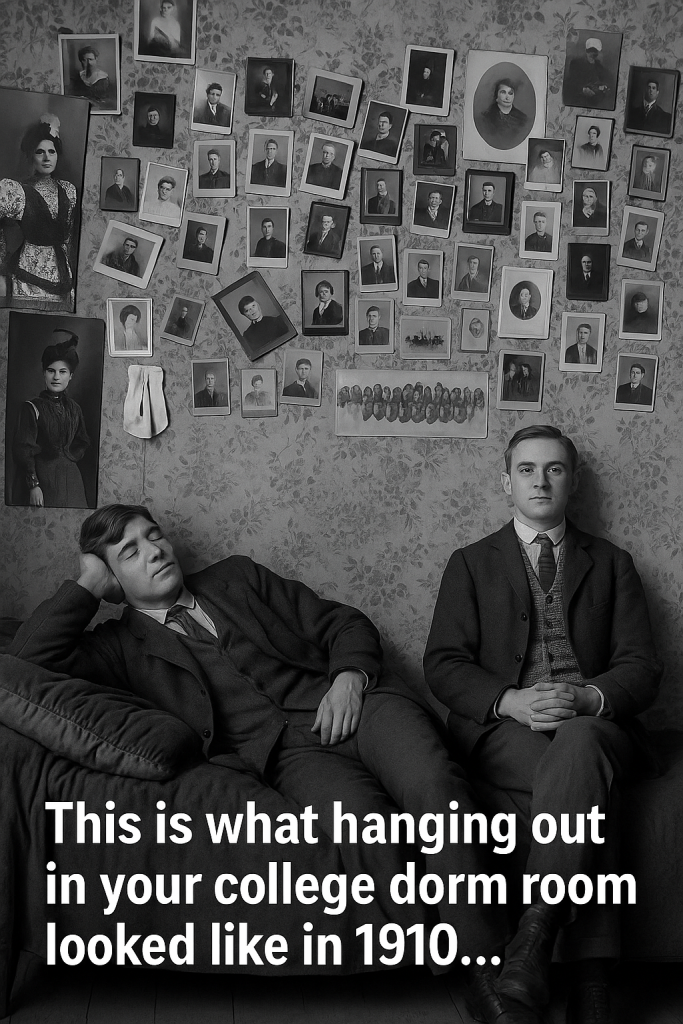Over a century ago, before the rise of Instagram dorm room tours and trendy décor hauls, college students in 1910 were already expressing their identities and creating cozy sanctuaries far from home. Though modern dorm life brims with tech gadgets and sleek furniture, the early 20th-century student experience reveals a surprisingly relatable quest for comfort, community, and personal touches in often spartan living quarters.
In 1910, campuses were often located away from large cities, in rural or small-town settings. Many students did not initially live in dormitories; instead, they stayed with relatives or in boarding houses near campus. However, as educational institutions expanded, dormitories gradually became the standard residence for students seeking both independence and a shared social life. Even then, these dorm rooms became a canvas for self-expression.
Historical accounts and recently surfaced photographs show students adorning their dorm walls with posters, snapshots, and keepsakes from home. These items connected them to their families and hometowns, providing emotional support during the adjustments of college life. Images depict young men and women surrounded by framed portraits, postcards, and fabric banners, forming intimate micro-environments that contrasted with the otherwise utilitarian wood and brick interiors.
Such decorations arguably served a dual purpose. Beyond adding personality, they helped forge a sense of belonging and eased loneliness. Given that many students had left rural or less developed areas for unfamiliar campuses, these mementos were anchors of familiarity. The possessions also often mirrored the social and academic identities they were cultivating — photos of clubs, hometown landmarks, or inspirational quotes encouraging scholarly dedication.
Comparing student living conditions of 1910 with today’s dorm culture highlights both progress and continuity. Early dorms typically offered sparse furnishings: a basic bed, a desk, and limited storage. Communal bathrooms and heating systems were rudimentary by modern standards. In contrast, 21st-century dormitories often emphasize comfort and connectivity, featuring Wi-Fi, climate control, and design elements that cater to both privacy and community engagement.
Yet, the spirited customization of space remains a constant thread through generations. Where 1910 students pinned photographs and hand-drawn art, today’s students string fairy lights, hang posters of pop icons, and display smartphones or gaming setups. The motivation—to make a new place feel like “home” and foster friendships—resonates just as strongly.
Recent research into archival materials and preserved dorm memorabilia has sparked renewed interest in documenting the evolution of student life across the last century. Exhibits showcasing dormitory life circa 1910 provide a vivid snapshot of how early college communities balanced practical living with the emotional need for connection. They also underscore how the dormitory, beyond being a simple residence, has long been a critical setting for building the social fabric of higher education.
In a world where modern students constantly share their dorm experiences online, these historical glimpses remind us that personalizing one’s living space to reflect identity and nurture community is not a modern invention—but a cherished tradition more than 100 years old.



